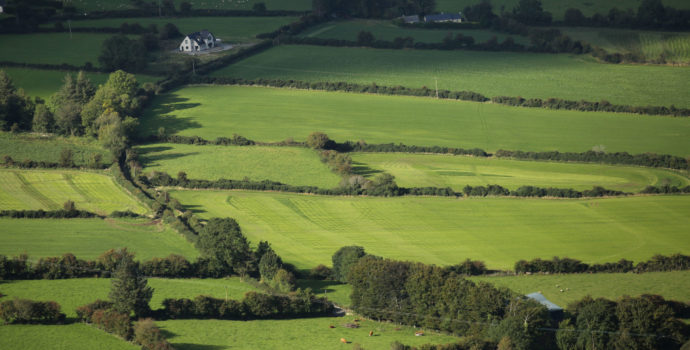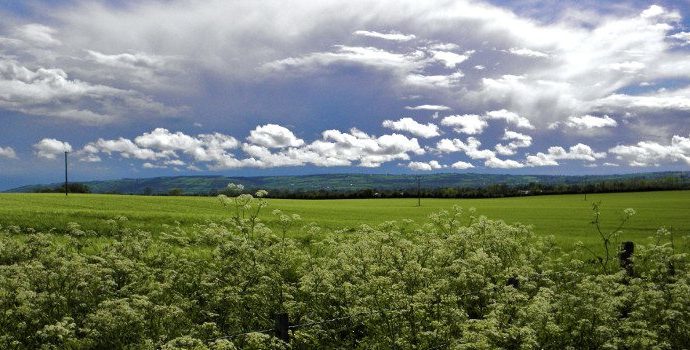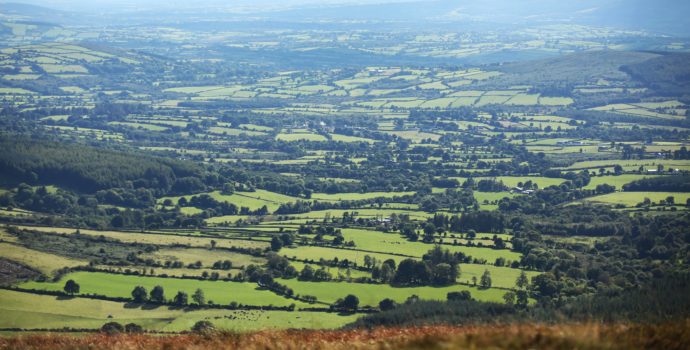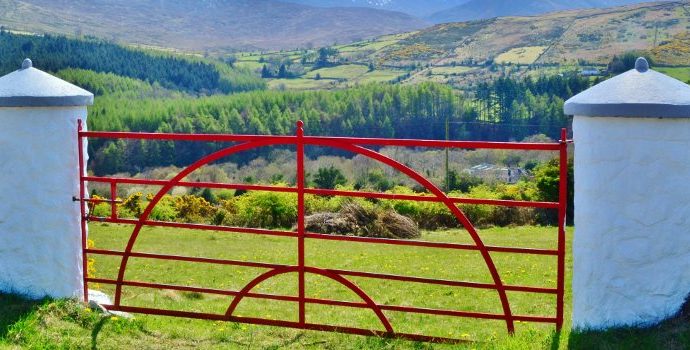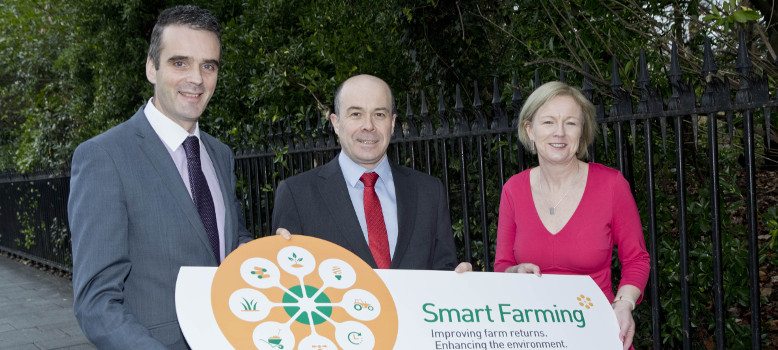
Smart Farming starts its 2018 work this month, identifying ways to improve farm returns and enhance the rural environment.
This year more than 1,200 farmers across 50 discussion groups, IFA branches and purchasing groups will get involved in Smart Farming. The objectives are clear: to find ways to reduce costs on each participating farm by at least €5,000 and how to reduce climate impact by 10%.
Denis Naughten, Minister for Communications, Climate Action and Environment recently commended the leadership provided by IFA and the collaboration with the EPA, saying “Smart Farming is making a real difference for farm families, their communities and the wider environment. This success is underpinned by the leadership provided by IFA, collaboration with the EPA and expertise provided by Teagasc, University College Dublin, Sustainable Energy Authority of Ireland and others.”
€7,000 saved by getting soil fertility right in Co. Offaly
Beef, sheep and tillage farmer Eamonn Dooley and his family from Kinnitty in Co. Offaly have already taken the Smart Farming challenge.
They identified ways to reduce their farm bills by over €11,000. The majority (over €7,000) of the cost savings came from reducing concentrate use and growing more grass, by improving soil fertility. 60% of the soils on the farm were in index 2 and needed increased nutrients.
The Dooleys are now developing an overall nutrient management plan for the farm, which will start with getting the pH requirements of the farm right by spreading lime.
Eamonn said, “It’s always busy here on the farm. Smart Farming allowed me to stand back, take stock and realise the savings that can be made by getting the building blocks of things like soil and grassland management right. It’s also good to know that these changes reduce the risks of run-off and makes a positive impact on the environment.”
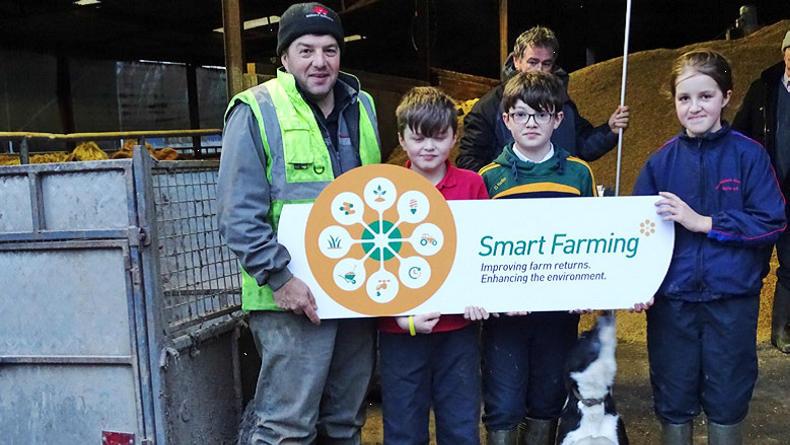
Taking the guess work out of energy efficiency and renewables
John Upton, Teagasc outlines how farmers can reduce costs through energy efficiency
Farmers can reduce costs, energy use and climate impact by using energy efficient technologies. However the question is often, which technologies will reduce costs the most? Remember the main drivers of energy consumption on dairy farms, for example, are milk cooling (31%), the milking machine (20%) and water heating (23%).
Teagasc, the Cork Institute of Technology and the Sustainable Energy Authority of Ireland have developed a FREE on-line decision support tool to help, which is available here and www.smartfarming.ie
Using the online Dairy Energy Decision Support Tool allows you to gain farm specific recommendations tailored to your situation (e.g. farm size and grant eligibility) and seek out energy efficient technologies that deliver a return in 5 years or less.
Some immediate steps you can take to reduce energy costs today include:
- Benchmark your farms energy costs against other farms. The average cost of electricity usage on Irish dairy farms is €5 per 1,000 litres of milk produced.
- Check the electricity unit cost against the best unit rates using a cost comparison website.
- Use night rate electricity for water heating and the morning milking. Night rate hours are from 11pm to 8am during winter time and 12 midnight to 9am for summer time.
For more information on Smart Farming visit www.smartfarming.ie

